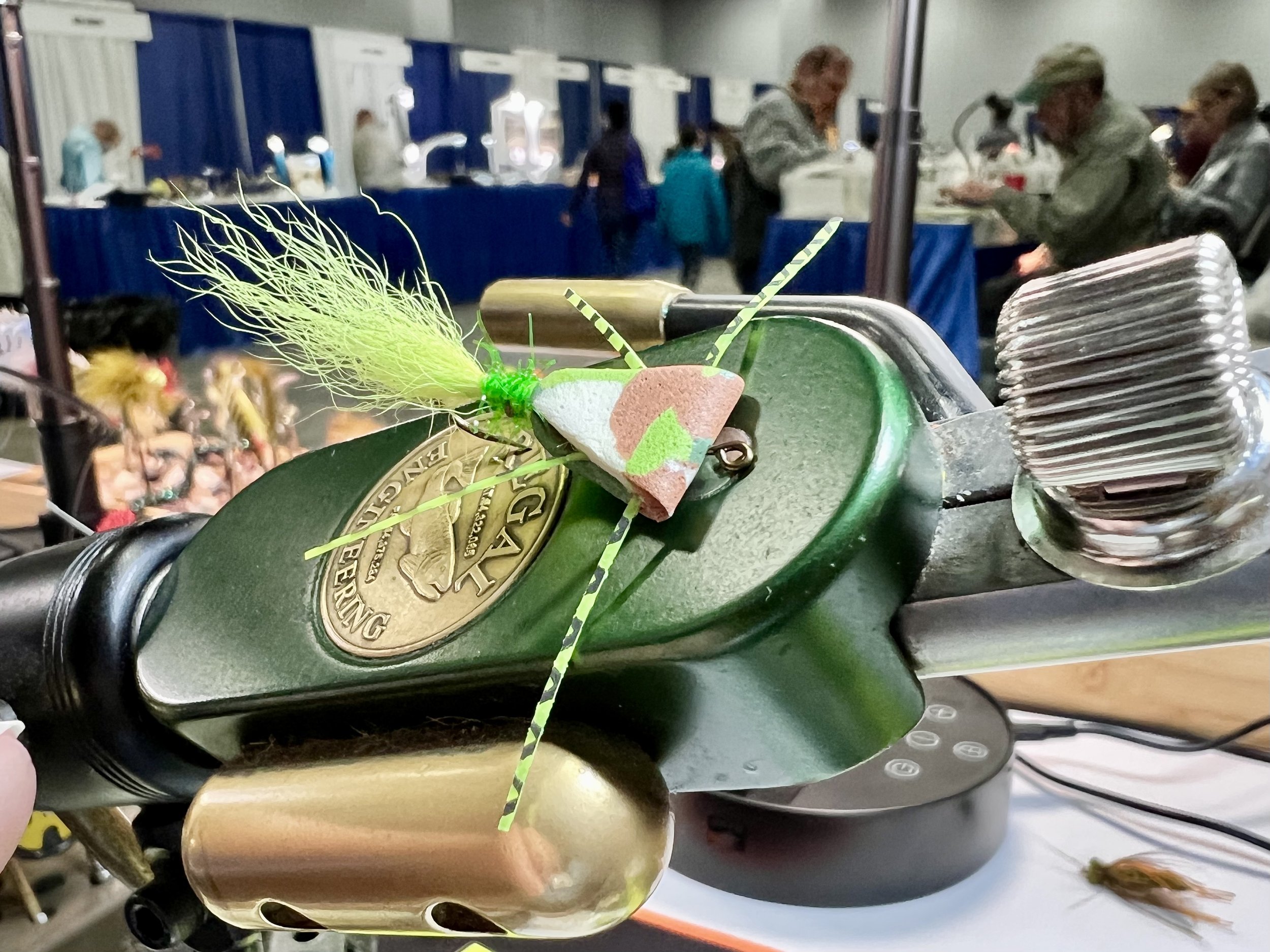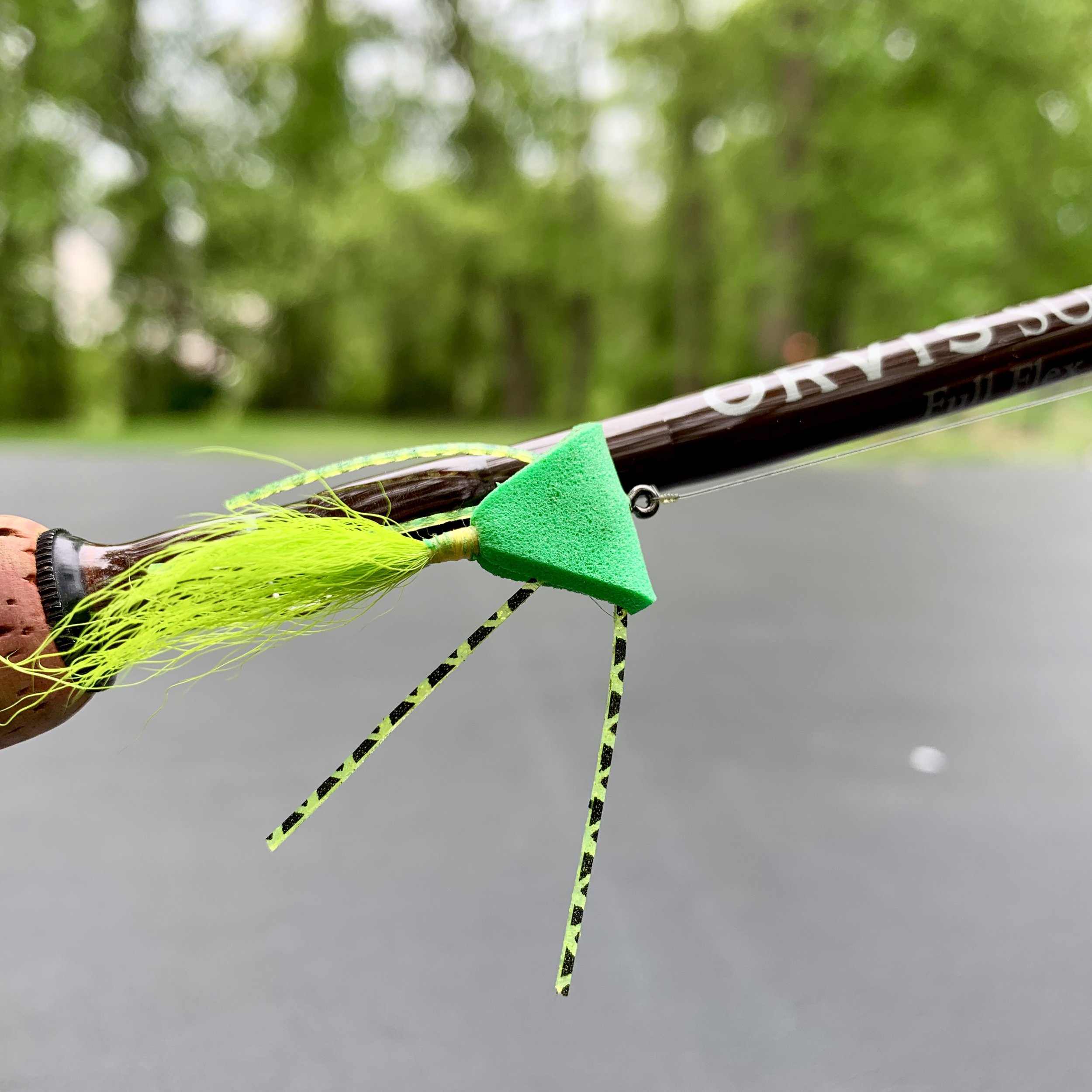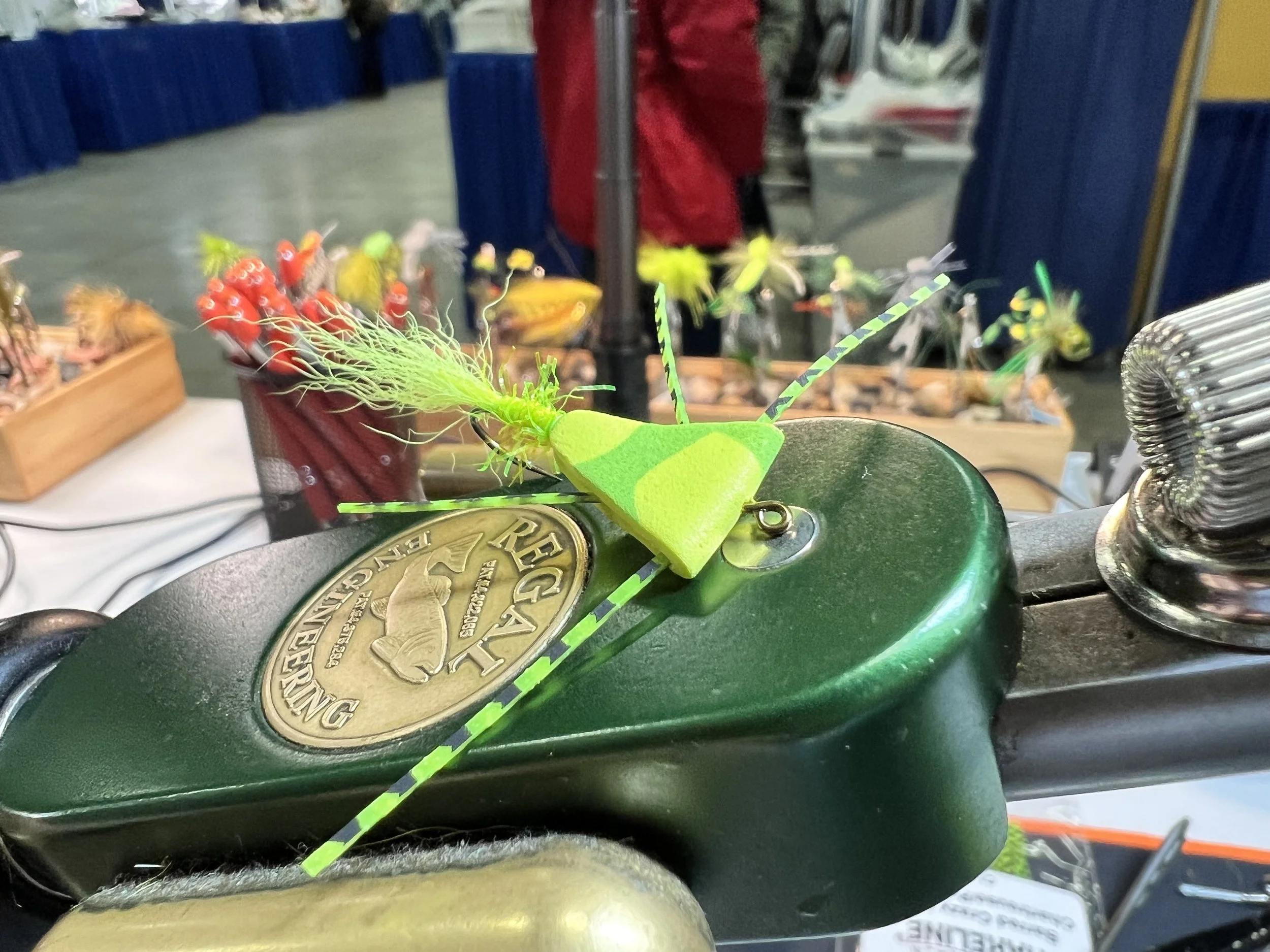At the last two fly tying shows I attended, I had quite a few questions about the unique hook I tie my Triangle Bugs on. The hook is constructed with a kinked shank, similar to a popper hook. The big difference is that the kink was formed on a horizontal plane instead of a vertical one. This feature prevents the foam body of the Triangle Bug from rotating on the hook shank. This would occasionally happen when the fly was tied on a traditional hook. After catching several dozen fish, the thread wraps at the base of the body would begin to loosen up.
The horizontal kinked shank Triangle Bug Hook
I discovered this discontinued hook at an outdoor show some years back. The hook was perfect for the Triangle Bug, so I purchased the entire lot. Over the years, I sold thousands of these hooks to customers who tied their own triangle bugs. Eventually, I exhausted the supply of the original hooks. So, I returned to my source. I asked him to scour his inventory of millions of hooks in a desperate attempt to locate some more. While his efforts did not find any more of the original hooks, he did find a longer shank version of the same hook in the same size. The new hook was described as a 4x long hook, while the original was listed as an extra long hook. That being said, there was not much difference in the length, allowing me to continue to tie Triangle Bugs on this hook and offer some to customers.
Please let me know if anyone reading this is familiar with this hook and its original purpose. I have scoured the internet, old hook catalogs, and just about every other source I can think of but have never come up with an answer.
A Triangle Bug tied on a long shank T-bug hook. The longer shank length does not adversely affect the design of the fly, but does increase hook-ups resulting in fewer missed fish.
The longer hook barely changed the appearance of my original pattern and increased hook-up ratios by putting the business end of the hook further back from the body. The longer hook also made it even more difficult for small-mouthed panfish to swallow the fly, which was the original purpose of the fly in the first place. The longer hook also gave me more real estate if I wanted to dress up the tail a little. In addition, the foam body cutter manufactured by River Road Creations worked just as well on the new hook.
Another “dressed up” version of the Triangle Bug.
The Triangle Bug was designed to be a simple-to-tie but highly effective topwater panfish fly, tied with just three materials: sheet foam, rubber legs, and tailing material ). Despite the Triangle Bug’s proven record of effectiveness tied just as it was designed, I kept coming back to that little extra bit of hook shank. The fly tier in me could not leave it alone. It just begged to be dressed up a bit.
When tying flies for my box, I occasionally put a little bling on the back of this longer hook in addition to the tail material. I have experimented with hackle and synthetics and have had good results. I can’t say the new flies were any more productive than the original unadorned version, but it allowed me to have a little fun behind the vice, tinkering with one of my favorite patterns.
The day is on the horizon when these hooks will be gone for good. I am down to just a few thousand. I suspect they will be gone in a few months. However, all is not lost, as the fly can be tied on a standard 3x-4x long light wire streamer hook (depending on the manufacturer).
Good fly tying techniques go a long way in creating a fly that will not prematurely fail on you. In addition, I have found that coating the thread wraps binding down the back of the body with UV resin will protect this critical area of the fly and prevent body rotation. If you want to try these kinked shanked hooks for yourself, you can find them by clicking the button below.
The Triangle Bug Foam Cutter creates perfectly shaped bodies every time!
I have been out of stock of the Triangle Bug Foam Cutters for a few weeks now. I am happy to announce they are now back in stock! I do my best to keep these cutters in stock, but the demand often exceeds the supply. Grab one before this run sells out! Clicking the button below will take you directly to the shop.
If your looking for other materials like foam, hooks, rubber legs and tailing material visit our shop.




